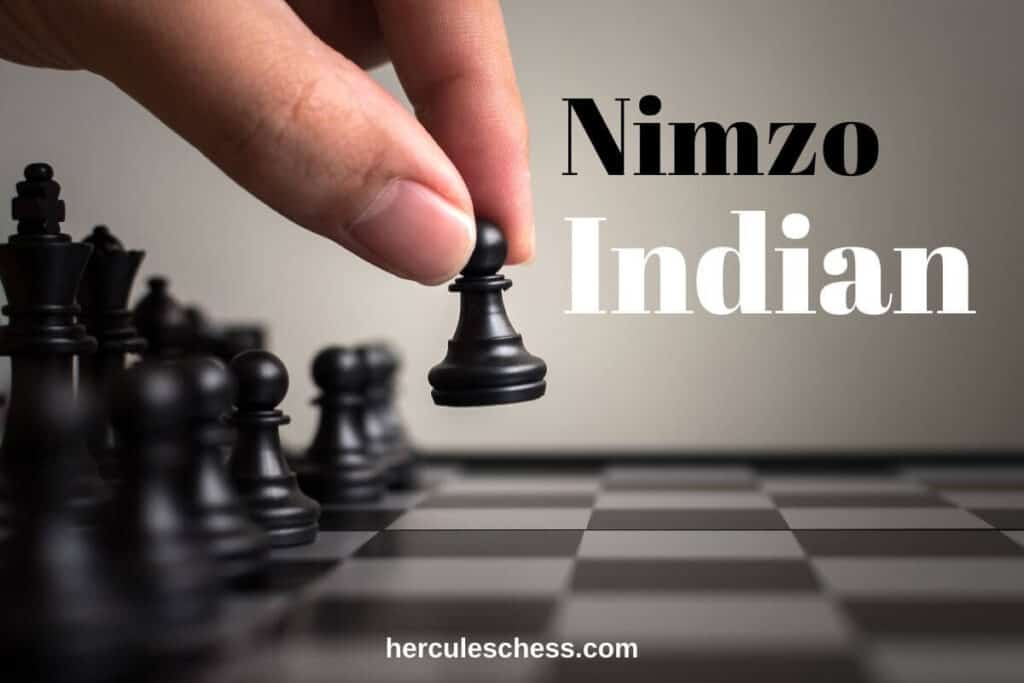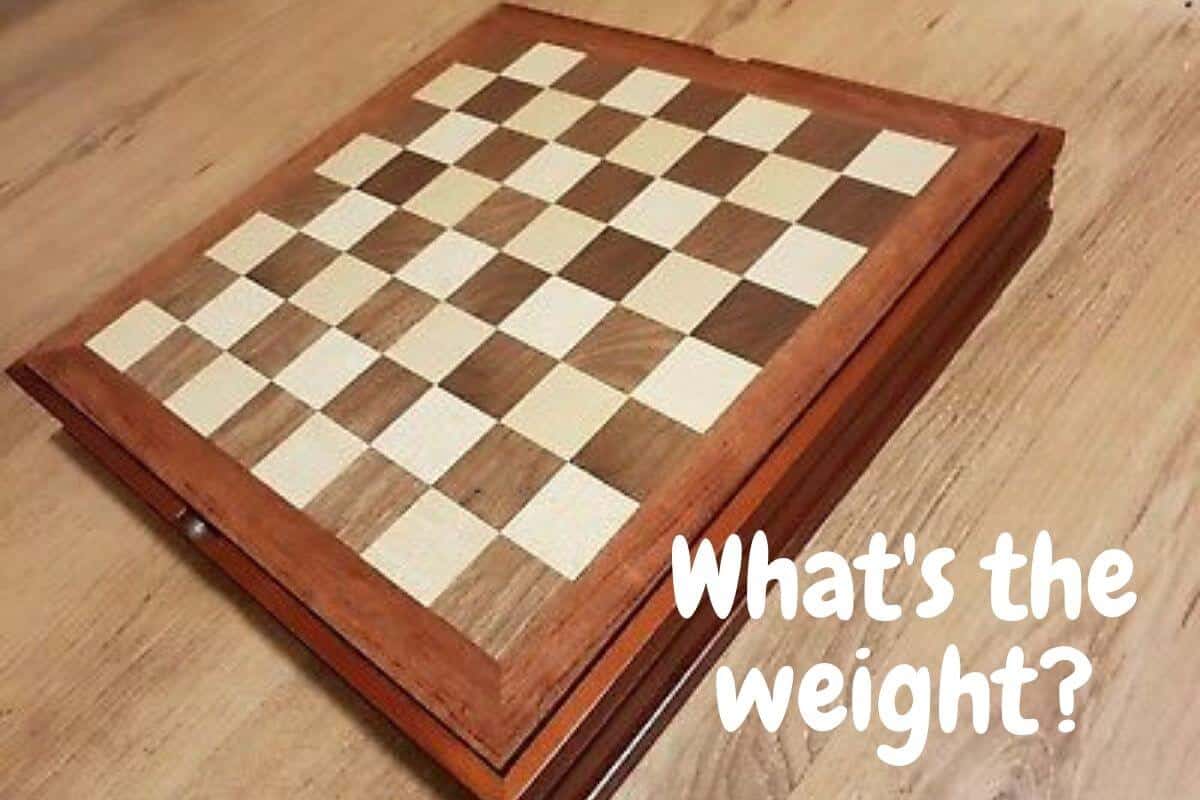In this article we shall take a look at the Nimzo-Indian Defense chess opening. This is the most popular reply to the Queens pawn opening.
The Nimzo Indian Defense begins with the moves 1.d4 Nf6 2.c4 e6 3.Nc3 Bb4
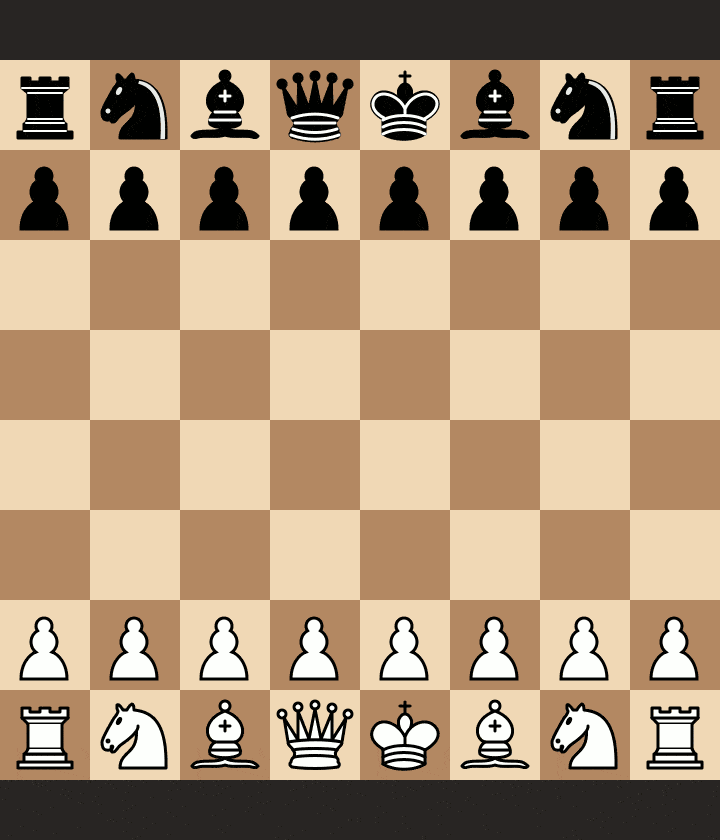
This is a “hypermodern” strategy, which is why it is labeled as an “Indian” defense without having the characteristic fianchetto.
Black does not occupy the central squares at first, but his pieces control them. The characterizing pin of the Nimzo, 3…Bb4, exerts control on the e4 and d5 squares and allows the option of doubling White’s c-pawns.
Aron Nimzovich, the ultimate chess theoretician and founder of this opening, left a legacy of chess ideas, some strange, some brilliant and some bad. He could hardly ask for great recognition than he has received here.
His name attached to this active and sound defense so highly regarded by the chess world. Battling with the white pieces his whole career against Nimzo-Indian, GM Botvinik conceded “there is probably no refutation of this defense”, about the most praise Botvinik has given anything.
Other World Champions were more forthright in their praise. They simply took up the defense from the Black side.
Nimzovich’s theoretical work involved the hidden possibilities of central restraint and blockade of doubled pawns.
White’s chances advantage are due to his pawn center and the frequent occurrence that he gains the bishop pair. The main variations seek to use these possible advantages in different strategic ways.
The Strategies Inside The Nimzo Indian Defense
Black’s use of the pinning move 3…Bb4 introduces two significant hassles for White. Firstly the bishop on b4 prevents White from stretching out in the center with his move e2-e4 due to the pin on the Knight.
The second factor which Black is taking account of with this move 3…Bb4 is the threat to capture on c3 at some point and give White doubled C pawns on the c5 square. The gif below illustrates this idea
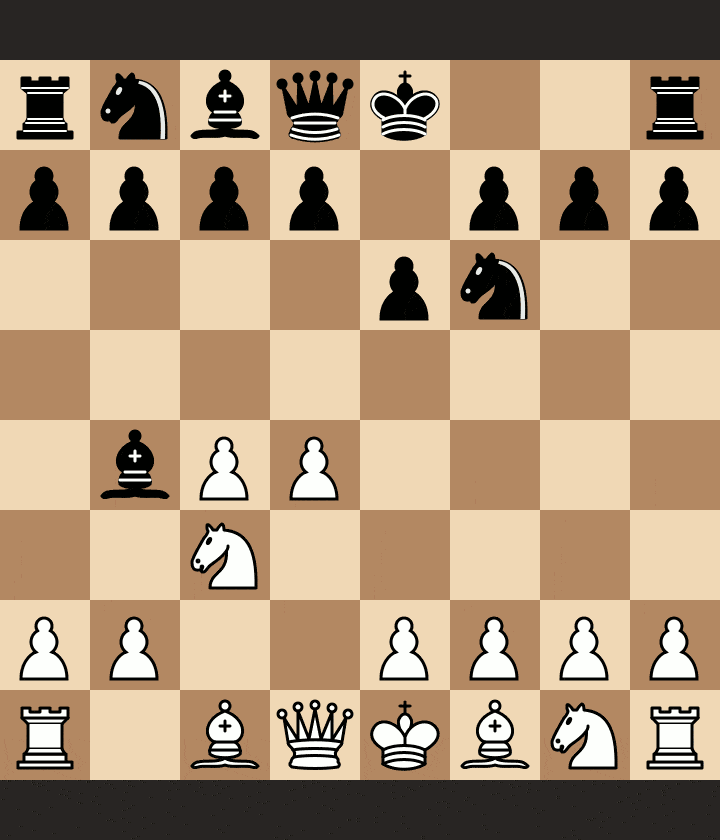
After 3…Bb4, some of White’s arguments is that he still maintains a space advantage in the center thanks to the duo pawns on d4 and c4. It’s due to this factor that Black will have some problems developing the remainder of his pieces.
White can still aim to advance the pawns forward at some point if Black does not play carefully. The second factor that can work to White’s favor is this possibility of gaining the Bishop pair. White will either provoke the bishop with the move a3 as seen in the image above, (either now or some point).
Or White may find that Black just capture right away without the provocation of White’s move pawn to a3.
In both cases, White will have the dark-squared bishop and the light squared bishop versus Black’s bishop & knight. If the game suddenly opens up, White’s bishop pair could become a monster. This will also offer some great chances for White in the endgame.
Classical Variation: Nimzo Indian
For this article, we shall restrict ourselves to understanding the most popular options for White, beginning with the move 4.Qc2. This is known as the Classical Variation or is also sometimes called the Capablanca variation.
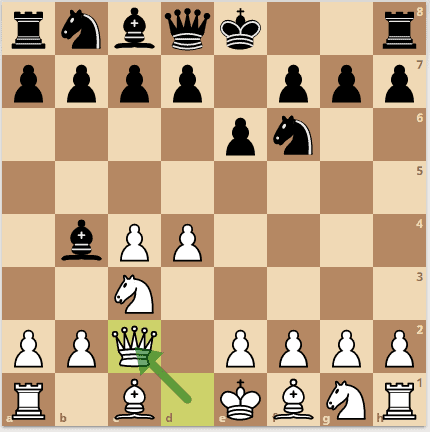
White’s core idea here is to prevent the black bishop from creating doubled c-pawns. By bringing the Queen unto the c2 square, White is now able to recapture the bishop in the event Black plays plays Bxc3. For example in the line 3…Bb4 4.Qc2 0-0 5.a3 Bxc3 6.Qxc3

We see here that White has already gained the bishop pair. The dark-squared bishop does not have a contender on the Black side.
After 6.Qxc3, we reach a stagnant position which is highly important and representative of the main issues in the Nimzo Indian.
White has capitalized on one of the most important downsides of this position. However, White has fallen a little behind in development. He is using his queen too actively in the opening and the queen is vulnerable to attack.
White simply has not done very much to complete his development. White knows that he need to catch up in development and at the same time, he is probably going to still be struggling to expand his e-pawn into the center.
It is this combination of extra space and the bishop pair that White is hoping to turn into a deadly combination.
Flexibility In The Nimzo Indian
The hallmark of the Nimzo Indian is its flexibility for Black. Black has a development advantage and has many different plans which he can try with varying degrees of success.
The most standard reply is to simply play the move 6…b6, followed by bishop b7, thereby further controlling the squares along the a8-h1 diagonal.
Perhaps at some point Black will attack in the center with c5 or in special cases pawn to d5.

Another setup which has become very popular recently is to play the move 6…d5, a well known favorite of Kramnik who was a former World Champion.
The idea here is to simply capture on c4. Black is now going to use a very annoying system of development by playing b6-Ba6. White has had big problems finding very much in this position.
Finally, another more flexible system for Black is to simply play 6…d6 followed by the developing moves Nd7-b6-Bb7. Later he might push his pawn to c5 or contemplate pawn to e5.
All of these different systems give Black a different position. They each allow Black some some decent chances, but Whit tends to have just a small initiative remaining in these positions.
4…d5 Variation
Black still has other ways of opening up his attack on the center more quickly. He can play for the immediate 4…d5 instead of castling.
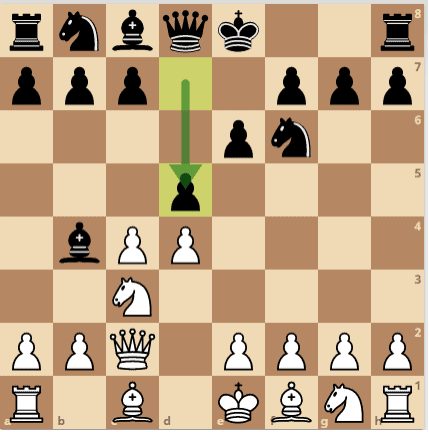
In this position, unlike the traditional Queen’s Gambit, Black already threatens to win the c4 pawn thanks to the pin on the knight.
Now if White plays 4.e3, theory shows that this is not a very good move for White since he is not really able to develop his c1 bishop properly and the Queen is a little bit misplaced.
Also, it’s not so easy for White to play a3 and capture on c3 because Black’s grip on the center is just a little bit too strong for White to now continue in this kind of fashion. Theory shows that Black tends to be more or less okay if he is combining the moves Qc2 and e3 together. For this reason, White does not play e3.
Typically white handles this situation by playing 5.cxd5 exd5
This might look like this gives up all the advantage in the center. However, we have to remember that we are trading flank pawn for a center pawn.
This yields us a 2:1 pawn majority in the center. Also, the Bishop on b4 is not very well placed anymore. It looks like that bishop would rather be on e7 where it protects against the potential pin, Bg5.

So, it turns out that sooner or later, Black may regret having played Bishop b4. This is one method for White to aim for an advantage after 5.cxd5 exd5.
Another interesting idea is that Black has developed in this position is that after the move 5.cxd5, he can actually make use of the pin by capturing with the Queen via 5…Qxd5. The idea here is that White’s Queen is missing in action from her normal post on d1.
Because of this, Black is already threatening to play Qxd4. If White plays for example the natural move pawn 6.e3, we have a lot of counter play for Black after the move 6…c5, taking down center and creating some weaknesses.
White therefore tends to keep his options open and plays 6.Nf3 instead of the cramping move 6.e3.

The key move for Black 6…Qf5 is a very interesting move in the Nimzo Indian. The idea here is after the trade of queens, Black has just setup a very strong grip on the e4 square, but he has done so at the cost of his structure somewhat.
Theory suggest that Black is very close to having a strong equality, but White once again has the slight initiative.
Conclusion
We looked at a lot of the main lines of the Nimzo Indian. Even though it seems like the strategic content is changing quite frequently, I think you will find that there are certain themes of the Nimzo-Indian that don’t change very often no matter what variation is being played.
Some of these themes for example are the bishop pair, doubled c-pawns, control by Black of the light squares particularly e4, White’s struggle to achieve the move pawn e4, and White’s struggle to bring the Bishop pair to fruition.
By studying the Nimzo Indian, if you isolate these few things and you pay attention to how these particular factors influence the game, you can learn a few considerable amount about chess in general. I recommend this opening with White and with Black.
